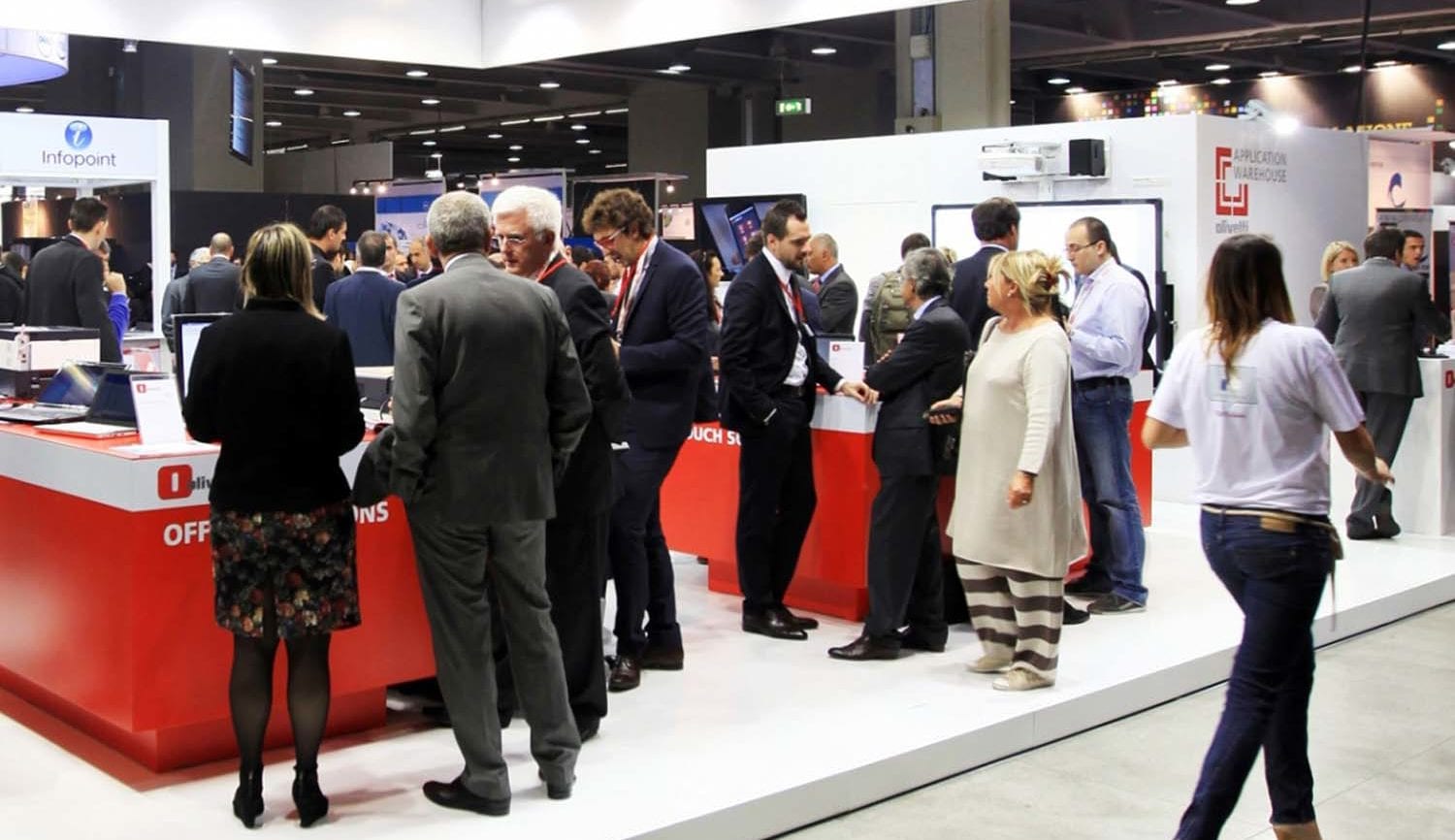According to a Forrester Research report, trade shows, conferences and events
#1. Map Out Competition
Every trade show is unique in their own way – be it the competitors who are exhibiting, or the layout, or the audience that the show caters to. To have a successful campaign at a trade show, it is important to chart out your competitors at the event, along with intel on their strategy.
One way to do it is by attending other events in your industry and identifying the layout and demonstration strategy used by your competitors. This will give you an idea of things you could do in order to be more effective. For instance, if you know that your competitors offer a live demo at their booth, you could one-up them by not only offering a demo, but also providing free samples for attendees to try out.
#2. Set Up Visual Demo
Blame it on the logistics or poor budgeting, a number of businesses make the mistake of not offering a visual demo of how the product works. Let us assume your business supplies the material for hot air balloon manufacturers. You could simple carry the material with you and show it to the attendees, or actually use a prototype of the balloon that the attendees to the booth may touch and feel to understand the utility of your product.
When David Dodgen of AquaPodKit, a bathtub bladder manufacturer tried to demo his product at a hurricane preparedness event, he bought an actual bathtub to the venue to store 65 gallons of fresh water – it visually communicated the utility to the attendees and made his campaign successful.
#3. Create Attendee Categories & Follow Up Strategy
Everyone understands the importance of follow ups in trade show marketing. But the trouble is in not having the right follow up strategy for the various segments of people you meet at the event. For instance, a typical trade show event will be visited by businesses looking for partnerships, suppliers, distributors, local media houses. Besides, you would also meet other sales executives from your industry who you may want to hire. Create separate lists in your CRM for these various categories of people you meet.
Also, prepare notes to provide a context for each of the person you meet. This helps you draft a very personalized follow-up message to the person after the event.
#4. Become An Authority For The Event
Events and conferences are pretty chaotic places and attendees often waste a lot of time simply getting around. Although organizers often have their own web and mobile applications to make getting around easy, you could always make it better.
Partner with the organizers and offer to build the application for them. This helps you get better visibility through the organizers’ marketing campaigns. Even if technology is not your forte, there are services that offer white-labelled conference apps that you could use as a starting point for building these applications that the attendees to an event might need.
Alternately, build a micro-site for the event where attendees can get all the information they will need about the event. This helps you serve as the go-to company for the event which makes it all the more likely for the attendees to visit your booth while they are there.
#5. Be Prepared With Infrastructure
Everybody loves to get swamped during a trade show event. But how do you make sure you are stocked sufficiently? Be prepared with sufficient number of samples and check with your web host to ensure your website can handle any potential spike in traffic. Most importantly, chart out a logistics strategy for instances when you may run out of all demos and samples. Can you figure a way out to arrange for more at short notice?
Sometimes, the ROI from events are only limited by how many attendees you have prepared yourself to be hit with. Do not let infrastructural limitations be the reason for lost business.
#6. Rehearse, Rehearse & Rehearse
Talking to a trade show attendee is serious business. You only have five minutes to network and sell your product. Therefore, rehearsal is key to success. Prior to the event, identify the various selling strategies during the event, and rehearse these various techniques. You may also test the efficacy of the various strategies with test customers. This helps you achieve your objective – be it generating leads for your sales team, or creating awareness about your products.
#7. A/B Test Your Event Strategy
Typically, companies in the B2B space attend at least 3-4 events every year. This is a great opportunity to test and learn strategies that work and those that do not. A lot of times, marketers try radically new strategies for every event. While these strategies may help you enhance your ROI, there are not many takeaways in terms of strategy.
To address this, do not change too many aspects of your booth and sales strategy between events. By just using one or two variables at a time, it is easier to know what works and what doesn’t. For instance, if you want to test the efficacy of providing freebies to visitors, ensure not to change any other aspects of your booth – this way, you can measure the success rate of freebies. For events that last for days, you could in fact A/B test these strategies during various days to know what works.
Events and trade shows are the lifeline of B2B businesses. With proper strategy and planning in place, it is possible to maximize your ROI through these events. What other strategies do you think are helpful in improving your returns from a trade show?
Other Resources: https://www.leddisplayrentals.net
international business trade show -DepositPhotos


